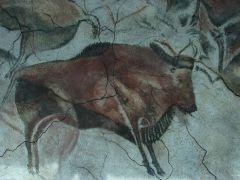
Exploring the history and experiences of mixed heritage persons and inter-racial relationships across the world

Exploring the history and experiences of mixed heritage persons and inter-racial relationships across the world
 The human race spread across the world from pre-historic times. It appears that migration is a part of the human condition. Unlike many other creatures, our migrations appear to ever forward and a return to origin or roots is the unlikely event rather than the norm.
The human race spread across the world from pre-historic times. It appears that migration is a part of the human condition. Unlike many other creatures, our migrations appear to ever forward and a return to origin or roots is the unlikely event rather than the norm.
So our ancestors left Africa and headed into the great unknown slowly moving in all directions tending to go round natural barriers rather than over. During these great movements, we met other members of our species such as the Neanderthals, probably earlier migrants themselves, and we interbred and eventually replaced these disparate groups.
Eventually our ancestors colonised most of the habitable places on the planet and hit the limits of further expansion for a while. It would be foolish to believe that humans stopped moving around, they probably a lot of to-ing and fro-ing within limits that meant communities where not that different from each other. There were exceptions such as ancient Egypt where the southerners where cosmetically different from the northerners.
All through human history, wars and natural disasters kept mixing the populations up which kept the genetic mix viable for survival.
 Technological advances such as the animal domestication, wheels and boats allowed humans to travel further and wider, usually driven by trade. In some cases the traders stayed and were absorbed into the new community. Usually the distance involved was limited and the difference between the trader's original community and the new one where not that different. There were exceptions where the differences would have been noticeable.
Technological advances such as the animal domestication, wheels and boats allowed humans to travel further and wider, usually driven by trade. In some cases the traders stayed and were absorbed into the new community. Usually the distance involved was limited and the difference between the trader's original community and the new one where not that different. There were exceptions where the differences would have been noticeable.
Further technologic advances and the insatiable desire for expansion and exploration meant greater distances started to be attempted and eventually populations separated by millennia of natural and social development including genetic variations started to meet and trade and fight and the natural human behaviour, mate. One could argue that it was during this period that the concept of race as we know it started to take root.
Many argue that the concept of race as we know it today was crystallised during the major colonialism era but that would miss a period that sort of falls between exploration and trade and full blown colonialism where small scale settlement in strategically important trading posts such as the Cape of Good Hope (Cape Town, South Africa). The considered mixed heritage Griqua (South Africa) and the Metis (Canada) are communities born out of such eras.
The early colonialism of the Americas led to the slave trade that brought into the genetic mix peoples who may not otherwise, at that time anyway, been included. Africans have the largest genetic variation so brought a new dimension of the narrower genetic makeup of the Americas and eventually the European peoples. The peoples of the Caribbean, the Southern part of the USA and South America especially Brazil are the beneficiaries of this mix.
The scramble for Africa created a number of settler communities introducing the European into the genetically diverse African population. It also generally the reason for the immigration now coming into Europe from Africa and the earlier Caribbean influx especially in the UK. The relatively affluent societies of the ex-Colonial masters draw people from all over the world and has resulted in the multi-cultural societies we are experiencing in Europe. The USA's experience is a result of the slave trade, the major immigrations from the old world and its attractiveness at the 'land to make it'. Many of these societies are resenting this 'reverse colonialism' and the slow growth of the right wing in many European countries does not bode well for the future.
Whilst many people of mixed race or mixed heritage in ex-Colonies are aware of their particular racial/heritage situation and in some cases have become a separate identifiable communities, this has not been the case in the USA and Europe. There is a slow rising tide of recognition of distinction in the USA and Europe. The aim of this project is help all of those who seek knowledge of what it is to be of mixed heritage.
Use the Links on the menu to explore some of the things discussed in this page.